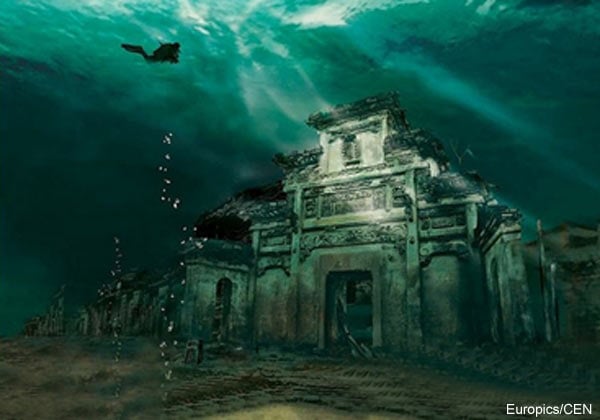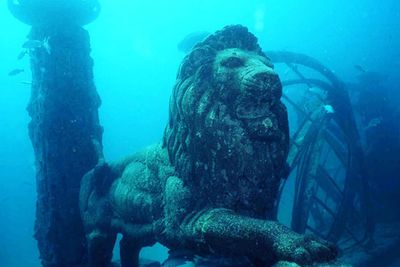Underneath the waters of Qingdao Lake in China, there lies an enthralling submerged city named Shi Cheng, shrouded in an enigmatic allure. This sunken marvel reveals elaborate temples adorned with exquisite carvings and impeccably preserved inscriptions, offering a fascinating glimpse into China’s lavish imperial history. Constructed during the Eastern Han Dynasty in the 2nd century, this city now rests at a depth of 140 feet below the surface.

Its name loosely translates to “Lion City,” once a bustling hub of commerce.However, when it was submerged in the mid-20th century, it was largely forgotten.

Only in recent years have researchers and the public rediscovered its ancient splendors, some of which were explored in the Smithsonian Channel’s documentary ‘China from above: Mountains and rivers.’

In the documentary, the presenter noted how the islands within the newly formed lake are actually the tops of hills, describing the space beneath them as a “unique underwater world.”

Lion City (Shi Cheng) has been submerged in Qingdao Lake for over 50 years since the construction of the Xi’anjiang Reservoir and Xi’an River hydroelectric station in 1959.
Lo Shaoliang, a diver, was one of the first people to plunge into the lake and discover the city. He recounted in the documentary how he used to swim in the waters as a child, likening the discovery of what lay beneath to finding “another world.”
Teaming up with Wu Lixin, a cameraman, the duo used 3D scanning technology to bring the city back to life on the surface. Thought to have been built at some point between 25 and 200 AD, Lion City was once one of China’s most powerful cities and retained this status for centuries.
Although forgotten for over 50 years, in 2014, authorities discovered that the city was still very much intact and decided to allow tourists to visit it.
Explaining that their efforts were the first time the city has been captured three-dimensionally, Mr. Wu said: “If we want to get a comprehensive set of data, we have to revolve around the object and take many photos from different angles. Then, we input those photos into a computer program.”
The result was a series of 3D images revealing the ancient stonework found underwater, including majestic statues of lions and other figures.
Mr. Wu said: “I hope that through our filming and exploration, more submerged historic relics and the stories behind them can be brought to light again.”
Much of the stonework found in the lake dates to the 16th century and is considered some of the best examples of Chinese architecture. The divers also found the city walls, which date from the same period, along with some spacious wide streets and 265 archways.
In addition to these, they found five entry gates to the city and six main streets paved with stones connected to one another, making the city about the same size as 62 football fields. Lion City is believed to have reached its peak in history between 1368 and 1644 when the Ming Dynasty ruled over China.
After this point, it began to decline, with the fatal blow coming in 1959 when the Chinese government flooded it. Now, however, history buffs and keen tourists can visit the lost city for themselves and even dive beneath the water with guides.
Protected from wind, rain, and sun, the entire city has been branded a “time capsule” as almost every structure remains completely intact, including wooden beams and stairs. There have since been plans to boost its tourism potential by constructing a floating tunnel across the lake.





